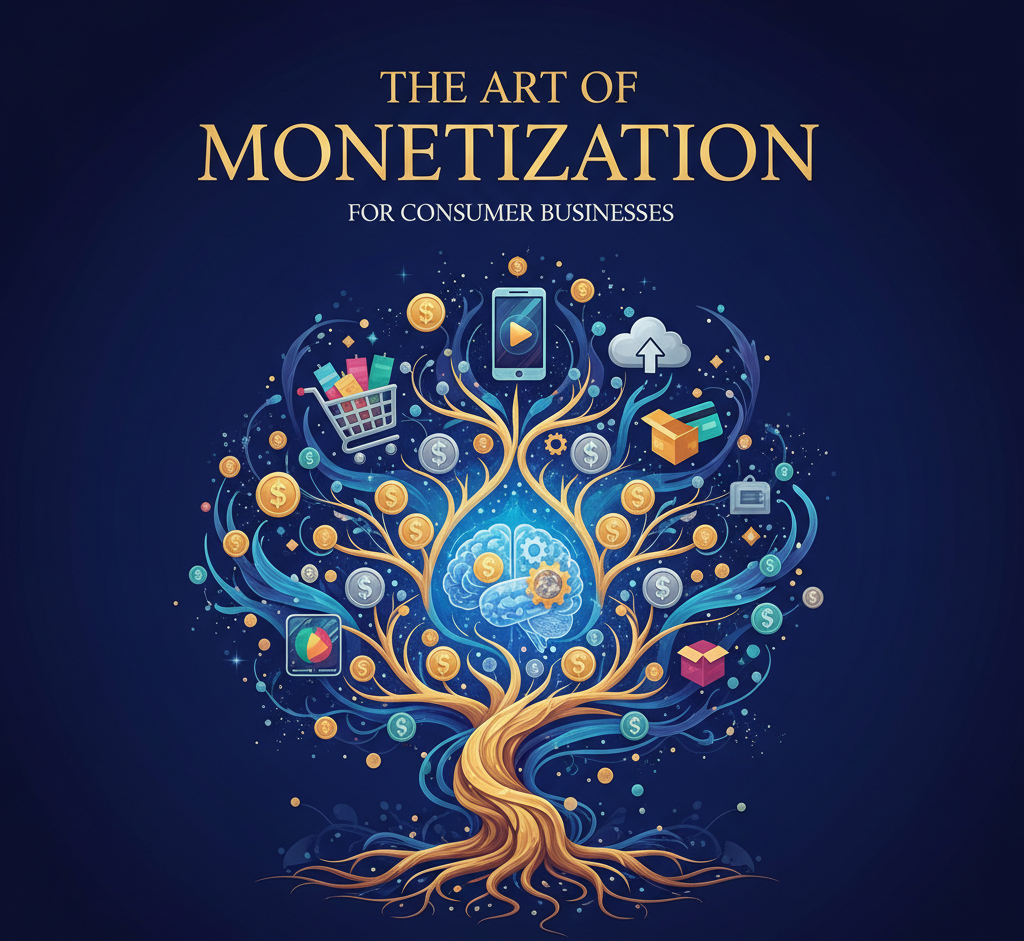In the COVID context, most organizations are wondering about what impact the economic crisis that will follow the health crisis, is likely to have on the growth of their businesses. There are a plethora of reports on changing consumer behavior and many predictions on what the future will look like. But, we all know that no one can predict the future!
In this context, what can organizations do to prepare themselves for the developments in the next few months to years. It is clear that the health crisis has not seen its end, many countries that saw near zero cases for a few months are beginning to see an increase again. This has led to a see saw in economic activity despite the best attempts by governments and businesses to spur the economy. There is no denying that growth is the need of the hour, be it for businesses, big and small or for the economy at large.
Evolving consumer behavior:
The starting point of anything we do as businesses is in consumer behavior. Whether you are a business that works with other businesses or directly with end consumers or users; changes in behavior of your consumers, customers and users has a big impact on your business. There are many different trends that have been outlined in great detail across various market research reports; filtering through the details, I would highlight three key movements:
Digital adoption: We were well on our way in digital adoption in the pre COVID world, but it has accelerated dramatically in the COVID context. It is interesting to see how consumers have changed, literally overnight, to leverage technology for their needs; this is across consumer segments and demographic variables, forcing organizations to engage with their consumers leveraging a more digital approach. It is interesting to see a large number of people using digital engagement models for the first time; be it for content, products or services. The extended time frame of this change, has also led to it becoming a habit, rather than an one off action. And in the process, people have discovered the convenience associated. Take the example of grocery shopping – in the past, consumers that were shopping at physical stores, would drive to a physical retailer, go through the retail shelves, queue at check out and pay, drive back home; easily a task that took a couple of hours. In the new context, people have taken to online shopping for groceries, which takes 10 or 20 minutes and the groceries are delivered home. Consumers have discovered convenience and gotten past the barriers of lack of digital savviness, fear of online payments, uncertainty of delivery or issues with returns. I wonder how many of these consumers would want to go back to a physical store for grocery shopping in the future and even if they do, will it be at the same frequency as the pre COVID context.
Conscious spending: The concept has existed before COVID, but maybe the idea will get an update in the post COVID world. Consumers are going to be more mindful of what they spend their money on. In the near term, the uncertainty about the future will lead to a cut back on spending and postponement of large value purchases and cut back on discretionary spending. Even, in terms of smaller values, impulse spending is likely to reduce. In the medium to long term, consumers could question the need to spend on desires and dreams or prioritize based on what could give them a feeling of greater happiness or satisfaction. Lets take an example in the apparel and accessories retailing space; women love shoes and there is always the desire to buy another pair, irrespective of whether you have 5 or 50 pairs. In the context of mindful spending, there is a question on whether to spend on another pair of shoes or not, the answer could very well be ‘yes’ and the reasoning could be a sense of happiness, but there is an evaluation process involved. How should organizations brace up for this change to more mindful spending, amongst its consumer base, in the short, medium and long term?
Consumer adoption: In the past consumer adoption process theory explained how consumers would adopt a new product or service offered. We also relied on diffusion of innovation theory to understand the early adopters and the mainstream market that comes in much later. I wonder if the pandemic has changed some inherent principles linked to consumer adoption. We spoke of digital adoption earlier on, it is interesting to see the leapfrogging in this space, irrespective of demographic and psychographic variables. It is interesting to visualize a curve that is front ended towards early adoption than the other way around. Organizations need to pay attention to what other likely trends or innovations are going to lead to a leapfrog and if that presents an opportunity in itself.
In summary, evolving consumer behavior, points to a leapfrog in digital adoption, mindful consumer spending and a likely hastening in adopting relevant new trends; all of which are great indicators for organizations in their journey on transforming for growth.
Transformation for growth:
Most organization are focused on dealing with the disruptions to the business in the COVID context; it has been very challenging to ensure business continuity in recent times and it takes inordinate effort to just keep the business going. In this reality, transforming for growth is challenging and often not the first focus of leadership teams. And then there are organizations that have dealt with the crisis head on and looked at growth opportunities; there are industry segments that have gained from the COVID crisis and there are other well proven business models that have lost customers with no clear roadmap to recovery. For example, on the backdrop of a boom in digital adoption, last mile delivery linked business models have seen success and growth; more importantly, physical store based retailers have leveraged these models to move their business from the physical to digital world, cashing in on growth opportunities. And then, there are industry segments such as travel that has been significantly impacted by the crisis with no clear future roadmap.
It is clear transforming for growth is challenging. There is no one single idea that guarantees success. Based on reviewing many different case examples across industry segments, there are three important dimensions that can increase chances of success.
Mindset: In decision theory, mindset refers to the set of assumptions, methods and notions held by one or more people. Carol Dweck, in her book, Mindset: The New Psychology of Success, dwells deep into the power of mindset; fixed mindset versus growth mindset and how every area of human endeavor can be dramatically influenced by how we think about our talents and abilities, growth mindset being one where we believe our abilities can always be developed. I think there is no better time than now, for leaders to reflect on where employees in their organizations are placed with regard to their mindset. The key question for leaders is if they encouraged their employees to take risks and were they accepting of mistakes. Did the organization expect employees to work within a defined frame or was their an opportunity to explore beyond and collaborate across boundaries. There is no better time than a crisis to reflect on where people in an organizational context are placed. Organizations that have invested in encouraging a growth mindset have a head start in dealing with the crisis and finding new opportunities to transform their business towards long term growth. Unfortunately, it is impossible to drive this change overnight, but the learning could go a long way for leaders and organizations in dealing with future crisis.
Strategy: A natural extension of mindset or the ideological perspective of an organization leads us to the strategic perspective. At the outset, it is important to have a long term view of the business, a short term view just to address the crisis will not take a business too far. Chasing short term objectives is often detrimental to long term sustainable growth objectives of an organization. One of the biggest questions organizations need to find answer to is, if they need to do better what they have been doing thus far or is there a need to do things differently, or even better, is it essential to widen the horizon and do different things. One can look at this as a continuum of doing the same things even better or doing something different; is it about digging deeper or digging wider. In my opinion, the answer is not one or the other but being able to do both. In a crisis, it is important to explore areas that were never looked at as growth opportunities, for they could hold hidden treasures. A service firm that has been offering a range of services could continue to do those well, or even better, start to explore new services aligned to new opportunities that have presented itself in the context of the changing consumer behavior on the backdrop of the pandemic. It is important to watch out for emerging pockets of opportunity that could catapult an organization towards growth. This does not mean that the organization loses track of what its business model is and what has been the crown jewel in delivering growth; there is a need to consolidate and strengthen the proven business channels or models. It would not only make sense to widen the horizon and constantly watch out for new opportunities, but also go deeper and consolidate proven growth models. In the past organizations had specific transformation programs that were aimed at driving large scale change in strategy, structure, technology or culture, with the intent of driving desired results. Some of these were multi year programs and results of these changes were well documented across years. We are increasing moving towards an approach where organizations need to deliver results on an ongoing basis but also continue to transform themselves to deliver even better results.
Leadership: There is no better time than a crisis when leadership is tested to the hilt and the COVID pandemic has been the ultimate test of leadership. During the early days of the pandemic, the situation was evolving very fast and in the most unprecedented way; this only meant leaders needed to act with speed but stay flexible. The pandemic has forced leaders to act with a great deal of courage, it is important to not just rely on what worked well in the past but to look at the business with a fresh pair of eyes and explore all opportunities that presented itself, to constantly think of what the future could hold and plan and re-plan as needed. As leaders this is also the time to encourage your employees to innovate at the grass root level and both explore new ideas with speed and also let go off the ones that did not work. Finally, leaders need to bring a new level of emotional quotient to work, support employees and their families and cope with the social challenges that emerge.
A powerful mix of growth mindset, strategic perspective and leadership could help transform organizations for growth, in crisis situations.
Conclusion:
In summary, it is important to ask the question – ‘What business are we in?’ and for a ‘for-profit’ organization, the answer lies in delivering long term sustainable profitable growth. Results delivered in the short term with no inherent sustainability has no value as such a success is short lived. In a similar sense, delivering growth without a path to profitability has no meaning, as growth without profit is not sustainable. The best purpose driven organizations are able to focus on the larger purpose only because the core of their businesses are focused on delivering long term sustainable profitable growth. And finally, organizations often discover their larger purpose in a crisis. Let’s, not waste this crisis and get our organizations on the journey of transforming for growth.






Leave a Reply